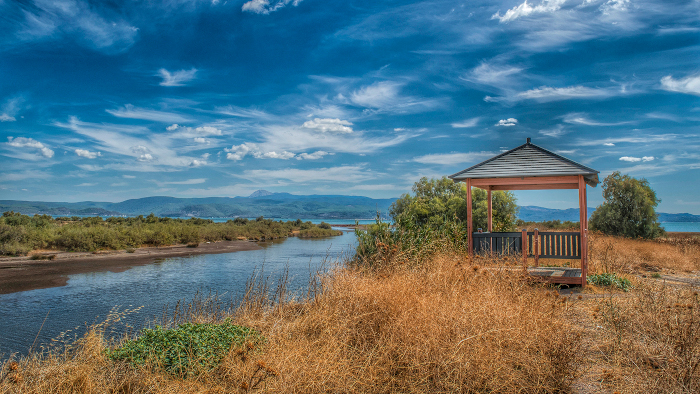The flora of the island includes 847 higher plants (angiosperms - gymnosperms) and another 17 species of angiophytes (ferns, etc.). of these, 24 species are endemic to Lesvos or the islands of the NE Aegean and Asia Minor. The endemics of Lesbos include Alyssum lesbiacum and Asperula nitida mytilinica.
The fauna of Lesbos includes 304 species of vertebrates (excluding fish) and a large number of invertebrates, which, however, have not been adequately recorded. The vertebrates of Lesvos include: 5 amphibians, 22 reptiles, 260 birds, 17 terrestrial mammals (in addition there are 2-3 purely marine species – dolphins, etc.). On the SW coast of the island, around Eresos, a few individuals of the Mediterranean Seal (Monachus monachus) survive, which, as is known, is globally threatened with extinction. Also, Lesvos and to a large extent the area of Eresos, is the only part of Europe where the Persian squirrel (Sciurus anomalus), a species of Western Asia, is found.
FOSSIL FOREST
Twenty million years ago, a rich vegetation with huge centuries-old trees, whose trunk diameter reached 8.5 m, covered the entire area of western Lesbos.
However, the intense volcanic activity of Mount Ordymnos led to the denudation of the area and the petrification of the local flora.
Today this phenomenon – in the triangle of Antissa, Sigriou, Eresos – is imposing, mainly due to the coloring of the fossils.
No description and no means other than a site visit can adequately reveal the true wonder, beauty and strange attraction that the Petrified Forest has on the visitor, who will notice most of the petrified trees with their roots, in the same exactly where it was before they fossilized!
There is also an underwater section of it in Sigri. The petrified forest of Lesvos is an honorary member of the "European Georparks".
In the same area, there is also the famous Natural History Museum of Sigri with many exhibits (trunks, leaves, shoots, etc.).
Paleontological fossils were also recently discovered in the area of Vrissa (Polychnitou Municipality) with more important findings: jaws and bones of a rare species of oversized monkeys, elephant tusks, small pieces of the body of a giant turtle, whose replica is exhibited in the museum-collection of Vrissa, etc.
